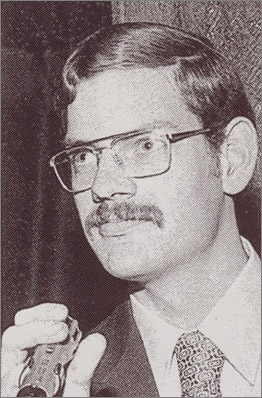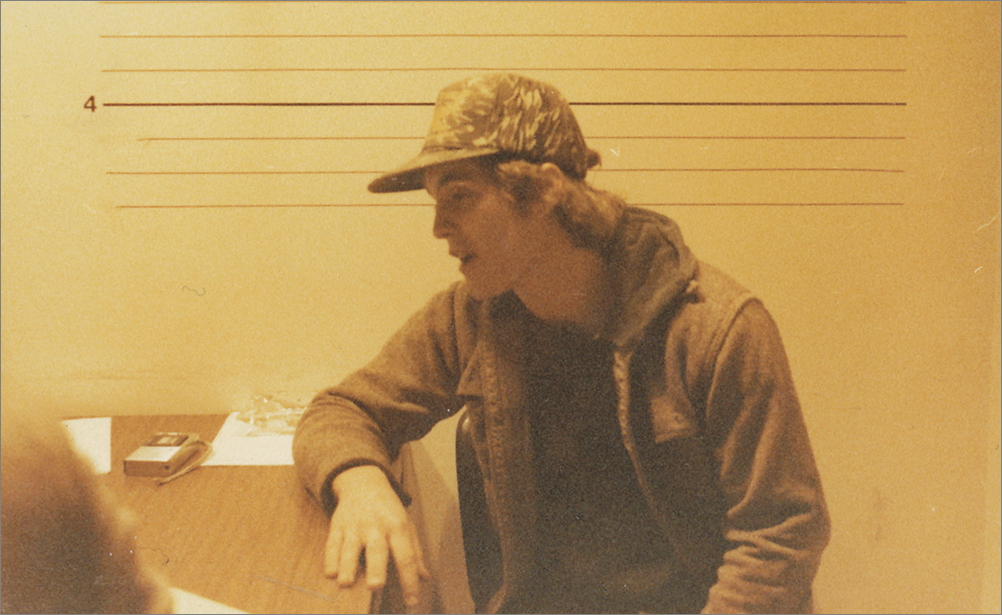Turning to address the Peel interrogation in Bellingham, Phillip Weidner accused Sgt. Glenn Flothe of trying to “break” Peel and get him to “make admissions.” He intimated that he was “trying to make him feel insecure,” then added, “You were lying to him, weren’t you.” For the troopers, these represented common — though oft-controverisial — interrogation techniques.
“We told him some things that weren’t true, that’s correct,” Flothe replied. “And some things that were partially true.”
“You lied to him and said that someone had positively identified him, didn’t you?” Weidner asked, once more on the attack. “Was that to try and scare him?”
“It was to cause him to believe that we felt that he was a suspect in this case,” Flothe calmly responded, familiar with the cat and mouse game played between cop and suspect.

Weidner moved on. He had Flothe draw a diagram. Had him provide all the crucial dimensions. The interrogation room, Flothe responded, was either eight feet by six, or ten by eight. Sergeant Galyan, he continued, was about six-feet-two-inches tall and 220 pounds. Flothe was six-four and weighed 205 pounds. Weidner was having Flothe paint an image of intimidation: small room, big guys, little John Peel. Then he took the sergeant through the transcript of the interview and said “we’ll keep track of the lies.” He made it appear that the lies were numerous. At times, the two men engaged in mutual hair-splitting.
Eventually, Weidner got to the part of the interview where Peel complained to troopers about their treatment “Boy,” Peel had said, “you guys are intimidating me.” Weidner had a question: “Now was that when Investigator Galyan was knee to knee with him?”

Note Sgt. Galyan’s head, lower left
Flothe just shook his head. He smiled at the thought of Weidner’s provocative question. He wasn’t sure how else to respond. “Is there something funny about that?” Weidner asked. “When I asked you if he’s knee to knee, do you find that amusing?”
“What I find amusing, Mr. Weidner, is I’m not quite sure what you meant by ‘intimidating.’ I’m not quite sure what you meant by the question.”
“Was he knee to knee with him and getting right in his face and talking to him like this?” Weidner asked, moving within eight inches of Flothe’s face. It was a scene out of a movie.
“No,” Flothe responded mildly. “It wasn’t in his face like you were with me, Mr. Weidner.”
“How close was he?”
“As I stated before, his knee was close to the front of his knees. Mr. Peel was leaning back. I’m sure he wasn’t leaning forward into Mr. Galyan’s face.”
“Now, he’s leaning back in a corner isn’t he?” Weidner said, pouncing on the intimidation theme with glee. “I mean, you’ve got him in a corner don’t you? His head is going to hit the wall, isn’t it?”
“Yes,” Flothe replied simply. And so it went. It had become an interrogation about an interrogation.
Excerpts from the unpublished original manuscript, “Sailor Take Warning,” by Leland E. Hale. That manuscript, started in 1992 and based on court records from the Alaska State Archive, served as the basis for “What Happened in Craig.”
Copyright Leland E. Hale (2020). All rights reserved.

Order “What Happened In Craig,” HERE and HERE. True crime from Epicenter Press.